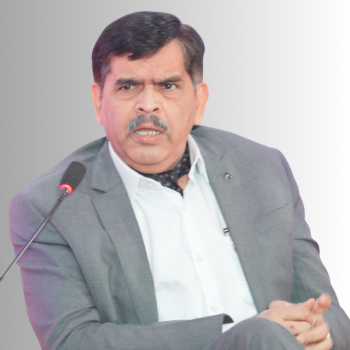
New Economy Convention – Payment Systems & Sustainable Growth
Indian Transport Convention – Mobility & Sustainable Growth
Indian Insurance Convention – Insurance & Sustainable Growth
Digital India Convention – Digital India & Sustainable Growth
Indian Sustainability Convention – Sustainability & Inclusive Growth
Indian Science Convention – Science & Sustainable Growth
Smart Technologies, Sustainable Growth
Technologies have made enormous impact on growth and development of the countries around the world. Developed or advanced countries today are in that league largely because of the effective use of transformational technologies. Technologies have played a critical role in accelerating economic growth and improving living standards of millions of people. In the past four decades, transformational impact of technology has been more glaring. It has disrupted traditional businesses and created new business opportunities and jobs.
Technologies have huge direct as well as indirect impact on the economy. In India and most other countries, Information and Communications Technology (ICT) is among the fastest growing sectors – directly creating millions of jobs. However, its indirect impact on the economy is even more important and significant. Information technology-led e-Commerce business has created far more employment opportunities in related services.
Rising population has put severe pressure on India’s resources. The situation is projected to even worsen in the coming years with the country’s population estimated to increase to 1.47 billion by 2030. This will exert immense pressure on the country’s natural resources and infrastructure. Rising population is polluting cities and leading to higher carbon emission. Prudent use of ICTs can potentially turn this gloomy situation into an opportunity. For example, e-Commerce can help reduce carbon emission by eliminating the need for the people to travel to stores and shops. Similarly, e-Learning would also help reduce carbon footprint and free up the physical resources for alternative use.
Information technology is causing disruption and creating new business dynamics in a whole host of sectors – from payments system to transportation and mobility and environmental management. The initiatives like Digital India seek to promote extensive use of technology across the sectors. Electronic payments system has created a new economic dynamics. It has given rise to new business avenues. Growth in the businesses like e-Commerce is propelled by electronic payments system. This will potentially disrupt the way banking services are delivered. Transportation and Highways are very important from the point of view of sustainable growth. The conference will focus on other critical areas of sustainable growth like insurance, inventions, technological initiatives under Digital India programme and Indian enterprises and sustainability. All this is critically important for further accelerating and sustaining India’s economic expansion and taking the country to a higher level of development.

New Economy Convention
Payment Systems & Sustainable Growth
The Indian economy is largely cash driven. India has one of the highest numbers of currency notes in circulation. The number of Indian rupee notes in circulation is more than euros and US dollars put together. Cash-to-GDP ratio of India is 12 per cent, almost four times that of the other emerging markets like Brazil (3.93 per cent), South Africa (3.73 per cent) and Mexico (5.3 per cent). The country incurs huge cost in maintain such high cash system. According to reports, the yearly cost of maintaining cash in India is around Rs 21,000 crore. Moreover, cash is the main reason for black money, corruption and evasion.
To ensure Sustainable Growth it is imperative that cash is extinguished from the system. We need to move fast towards less-cash and ultimately to cashless economy. To achieve this, a multi-pronged strategy is needed. Cost of electronic payments is still very high. Therefore, the small businesses avoid it. There is need to develop a Small Value Payment System to make small transactions economically viable. Electronic transactions need to be incentivised for small merchants as well as consumers. Roll out of Bharat Bill Payment System seems too slow. At the moment it covers payments for only utility services like electricity, water, gas, telephone, Direct-to-Home (DTH). A challenge is to get the neighbourhood stores into e-Cash system. Aadhaar Enabled Payment System has huge potential. It will help eliminate bogus transactions. For example, Direct Benefits Transfer (DBT) for cooking gas subsidy has resulted in huge savings to the exchequer. As the bogus users are eliminated, the benefits are now reaching to the people who really need them. This needs to be replicated across the government schemes.
A number of companies are joining the fray to make electronic payments affordable. The companies like Flipkart, Amazon, Snapdeal, Uber, Ola are disrupting the system through innovative payment system and service delivery. It is creating a new eco-system and new economy.
More than half of India’s population still doesn’t have access to formal banking system. This is indeed a bane on the economy. But this offers an opportunity to leapfrog to the cash-less system. Telecom revolution in the country presents a perfect example. Most Indians skipped the fixed-line telephony to go straight to mobile phones. Similarly, those who are unbanked can straight away join the cash-less system. Most Indians are now connected to mobile phones that can be used for payments and fund transfers. In fact, India could be the world’s first country to become a cashless economy.
The Conference will deliberate on the following key points:
- Cyber Security
- Aadhaar Enabled Payment System
- Extinguishing Cash
- Small Value Payment Systems
- Getting Neighbourhood Stores into e-Cash
- Bharat Bill Pay

Indian Transport Convention
Mobility & Sustainable Growth
Transport system is an important component of economic development. Globally, economic growth and development have been closely linked to the mobility of people and goods. In fact, transport system is an important component to gauge the economic development of a country. Efficiency of the system is becoming all the more important because of its environmental impact. Therefore, developing an efficient and affordable public transport system is critically important for Sustainable Growth.
Under the Indian Constitution, transport is on the Concurrent List and main responsibilities and authority vests with the State governments. Different states have different rules. There is no uniformity. This causes a lot of hardships to the common people. Inter-state mobility of people and goods are increasing day by day. So there is need for a National Transport Regulator in order to bring and maintain uniformity in the system.
There is need to create a Smart Mobility system. Around the world, especially in the developed countries the focus is on providing reliable and timely information on transport mobility. Such information is increasingly available on mobile phones. Reliable information helps in taking correct decisions. For example, if somebody comes to know that there will be traffic jam due to some religious procession on the route she/he intends to drive, she/he would take alternate route or leave the car behind and take public transport. It would help save her/his time and money and reduce carbon footprint. A Smart Mobility System requires development of comprehensive algorithms that give reliable and prompt information on transport system, especially public transport. While Google and some other Apps give information on traffic condition and route, common people get hardly any information on public transport. To promote public transport it is essential to make it reliable and more efficient.
In the case of public transport, end-to-end connectivity is a major issue. Efficient and reliable last mile connectivity is equally important.
Inefficient transport system adds a significant cost to goods in the country. It hampers manufacturing. In fact, India’s competitive advantage in several sectors is lost due to inefficient transport system. Mass Rapid Transit (MRT) system needs to be developed on a priority basis. Several economic corridors are planned. But the work is too slow. Connecting economic agents is critical for sustainable growth. Transport infrastructure requires huge investments. Where the money will come from? Can the government alone finance it? The answer is, no. There is need for greater private participation. Predictable and uniform legislation would help in attracting private investments.
The Conference will deliberate on the following key points
- Highways as Engines of Growth
- Financing Transport & Infrastructure
- Metropolitan Transport Authorities
- Promoting Public Transport
- MRT as Priority

Indian Insurance Convention
Insurance & Sustainable Growth
There is a close link between insurance and sustainable growth. This is critically important both from the point of view of providing social security and safety net to the people and businesses as well as boosting investments. However, both from financial inclusion perspective as well as from the perspective of its role in investments and economic expansion, insurance sector has received less attention than banks and stock markets.
Insurance penetration in India is among the lowest in the world. Total insurance premium as a percentage of GDP stands at around 3.5 per cent. Some radical reforms were introduced in insurance sector in 1999 by allowing private and foreign participation. Policymakers and government claims significant improvement presenting the absolute numbers. Total asset under management of insurance companies has risen to Rs 26 lakh crore in 2016 when compared with Rs 1.43 lakh crore in 2001. Total sum assured has surged to Rs 95 lakh crore in 2016 from Rs 2 lakh crore in 2001. Total number of enforced life insurance policy has increased to 35 crore.
However, the situation does not look so rosy when we look at the bottom of the pyramid. Majority of the people don’t have any safety net. An unfortunate incident in family or even some minor health related problem could push the people at the bottom of the pyramid in the vicious cycle of poverty. Micro-insurance is critical to providing safety net at the bottom of the pyramid. Health insurance is important, even more important than the life insurance. Micro-insurance facilities need to be aggressively encouraged in health segment. Adequate health and life insurance coverage can help break the vicious cycle and lift millions of people out of poverty.
The world is becoming riskier place by the day. The risks are emerging from climate change, environmental and natural disasters and man-made risks like terrorism and cyber-attacks. All this makes people and businesses vulnerable. While in the developed countries majority of the lives and properties are insured, in India the cover remains abysmally low. This is evident from the data of recent disasters. While in India, damages covered by insurance during the disasters like Chennai and Jammu Kashmir flood and Andhra Pradesh cyclone were in the range of 6 to 8 per cent. In the case of developed countries, 70-80 per cent of such damages are generally claimed for insurance cover.
The Conference will deliberate on the following key points:
- Micro-Insurance
- Lifelong Income
- Health
- Emerging Man-made Risks
- Climate Change
- Environmental Liabilities

Digital India Convention
Digital India & Sustainable Growth
India is diverse with a large proportion of its people marginalised and excluded from the main economic system. Technology would play a critical role in mainstreaming these marginalised sections of the society. The Digital India programme’s stated objective is to “transform India into a digitally empowered society and knowledge economy.” The focus of the initiative is on increasing connectivity and providing services faster and in more efficient manner using information technology. Technology can work as a catalyst of growth and social empowerment. Modern technologies not only spur growth but also make it sustainable. Connecting Gram Panchayats and villages with high speed Internet and using Cloud technology to ensure easy access of citizen services and encouraging steps. However, the focus should also be on empowering the people through technology. Technology should not only be made available to the people but they should also be empowered to use it. Every Indian need to be made digital. We have to move from Digital India to Digital Indian.
There have been tendency to copy technology and practices from the developed countries. India’s challenges are different from those of developed countries. So, replicating their technology and practices won’t solve our problems. Under the ‘Internet of Things’ (IoT) concept, the developed countries seek to connect the devices like washing machines, refrigerator and coffee makers. But India faces much bigger challenge in the areas like farm, sanitation, safety and security. So, if we can develop a mechanism of monitoring the health of soil, water and crop, it could be very helpful in boosting agricultural growth. Connecting dustbins would help more efficient and timely disposal of garbage. Similarly, technology could be used in other areas critical for the masses. Big data and analytics from these areas would help in taking targeted and effective policy decisions. So, we need the Internet of Indian Things (IoIT), instead of replicating the practices of developed world.
The new tax law Goods and Services Tax (GST) will be implemented through an end-to-end digital platform the Goods and Services Tax Network (GSTN). Once the new regulation comes into effect GSTN would become the country’s largest digital platform. Its impact on the economy will be far reaching. Cyber security is the backbone of these systems. There have been increasing instances of cyber-attacks on banks and other financial companies, industries, large organisations and even the country. Data with banks and the entities like GSTN are very critical and they will remain on the target of cyber attackers. The need is to remain vigilant and cautious and cyber security should be at top of any technological initiative.
The Conference will deliberate on the following key points:
- From Digital India to Digital Indian
- Internet of Indian Things (IoIT)
- Big Data and Analytics
- Cyber-security
- GST – Compliances and Upgrade Cycles

Indian Sustainability Convention
Sustainability & Inclusive Growth
Sustainability is the key for the success of any enterprise in the long run. Several enterprises have rise fast by disrupting set business model with the help of innovative technology. However, such disruption is not possible always. In the long run, it is sustainability that matter. Enterprises make money from the society. They owe their success to the society and thus have certain responsibilities to the society. In India, under the new company law, all profit-making companies are required to spend at least 2 per cent of their average net profit of the previous three years on Corporate Social Responsibility (CSR) activities. The law is applicable for companies with net worth of Rs 500 crore or more; or a turnover of Rs 1,000 crore or more; or a net profit of Rs.5 crore or more, during the previous three financial years. CSR should not be seen as mere philanthropy on part of the corporates. This is a tool for sustainable growth. It helps reduce investment risks. More transparency and accountability lead to better business profit.
Corporates’ role in environment management is also critically important. Industry is the world’s foremost creator of wealth and employment. At the same time, it is among the biggest polluters. Enterprise can play major role in addressing many environmental problems through better management practices. Focus on energy efficient technology not only good for environmental protection but also make good business sense. Companies own stakeholders are now putting increasing pressure to act in a socially and environmentally responsible manner.
Under the Paris climate agreement, India is required to reduce carbon footprint by 33-35 per cent by 2030 from its 2005 level. India took leadership position in finalising the agreement and the government has ratified it. Corporate role will be critical in meeting the obligations of climate agreement. Companies will have to use innovative measures to reduce carbon footprint. A sustainable supply chain is very important. India’s transport infrastructure is in a poor shape. This needs to be streamlined. Business activities should be encouraged in such a way that it serves the local needs and demands.
The Conference will deliberate on the following key points
- Environment Management
- Corporate Social Responsibility
- Sustainable Supply Chain
- Energy
- Carbon Management

Indian Science Convention
Science & Sustainable Growth
India is a country of glaring contrasts – majority of Indians lack basic amenities like clean drinking water, power, etc and nearly 400 million are in the extreme poverty, at the same time the country has successfully sent a mission to Mars and has thriving corporates. Challenges facing the country are enormous. It can be addressed only through innovations and inventions.
According to Census 2011 data, total number of students in India stand at 315 million. The number of graduates and doctorates in India is among the highest in the world. The numbers are gigantic. If a right eco-system is created, solutions to most problems can come from them. We often hear about impressive innovations by Indian students. Such innovations generally get good media coverage and being honoured and awarded by the government and private institutions. But they are rarely put in mass use and commercialised. India’s policy and eco-system on innovation and inventions is not encouraging. Mere awards and media reports won’t solve the problems. The innovations and inventions need to be scaled up to the masses it is meant for.
There is need for “Indian Innovation and Invention Exchange” to facilitate and encourage innovation and inventions. The Exchange would provide a platform to take the inventions from laboratory to field. It should work as a link between the invertor and the corporate. This would be critically important in boosting the culture of innovations in the country.
Invention-based businesses need more supportive policy environment in order to succeed and get their products to market. A robust policy should be put in place to protect intellectual property and patents. India’s intellectual property environment is among the worst in the world. According to a Global Intellectual Property Centre report, the continued use of compulsory lincences, patent revocations, and weak legislative and enforcement mechanisms raise serious about India’s commitment to promote innovation and protect creators. Getting patent is a very lengthy and cumbersome process in India. The process must be simplified and made transparent and effective.
Judicial process in India is notoriously slow. This has huge impact on patents and intellectual property environment. India’s challenges are enormous and diverse. Some challenges are region specific and the solution has to be found locally. Only innovation and inventions can help solve these problems. It can improve the lives of the millions of people and potentially lift them out of poverty. Today, we have nearly 400 million people living in extreme poverty and around the equal number studying in schools and colleges. The solution to this myriad problem of poverty can come from the creative minds in colleges and schools.
The Conference will deliberate on the following key points
- From Felt-Needs to Frugal Inventions
- Protecting Indian GI, IP and Patents
- Inventing for Corporate Edge
- From Lab to User


















 Dr Ashwani Mahajan, National Co-Convener, Swadeshi Jagaran Manch
Dr Ashwani Mahajan, National Co-Convener, Swadeshi Jagaran Manch